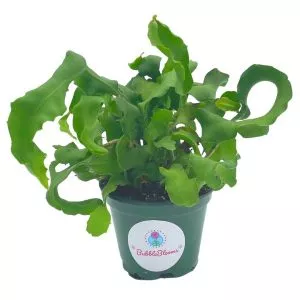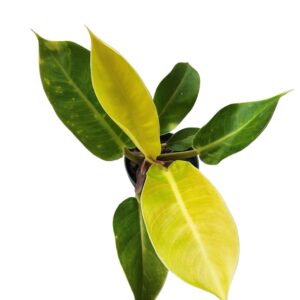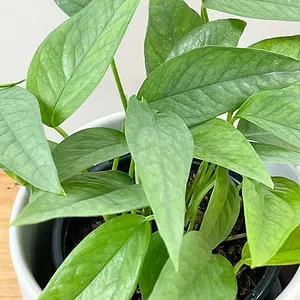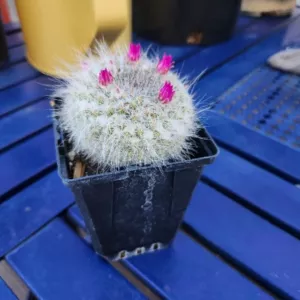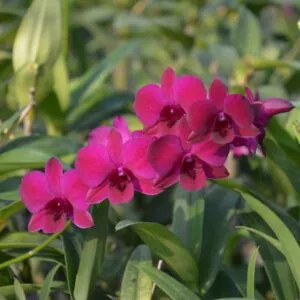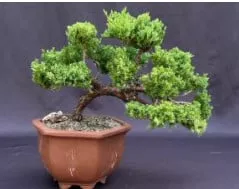No products in the cart.
Whether urban or rural dwellers, you have probably tried to grow tomato plants. The fruit adds a lovely taste, and growing them is fun.
Furthermore, growing tomato plants is rewarding, but it remains a challenge. The tomato plant multiplies, and you must cage the tomato stems to give them support, or they might break.
So how can you prevent this from happening? Well, tomato cages are the best way to keep your outdoor plants healthy to yield fruit.
But which ones should you invest in, and how do you use them? Here we share some helpful tips on using tomato cages to yield juicy tomatoes for the home.
Why Use Tomato Cages For Your Tomato Plants
Well, we cannot imagine growing tomatoes without using a cage. Why? As it will end up in a disaster. You will end up with unsupported tomato plants that sprawl around on the ground.
The stems become too weak and cannot support the large-sized fruit making it all wobbly. Eventually, when you have ripe tomatoes, the branches snap during strong winds or a rainstorm.
Your homegrown tomatoes will end up on the ground and go to waste. In addition, the tomatoes landing on the ground will become diseased and rot. Eventually, the diseases spread through the soil to other plants, making them sick.
So for tomatoes to remain healthy, it helps to keep them dry and off the ground. Furthermore, using cone-shaped tomato cages makes it difficult to animals to eat them when standing upright.
The best part is that using your own cage also helps harvest the tomato fruit while standing, as they are not sprawled along the ground. Also, it helps to determine the variety and whether they need caging.
We are here to help, so keep reading on!
What Tomato Plant Needs Caging?

You get two types of varieties, indeterminate tomatoes (mammoth) and determinate tomatoes (compact varieties). So naturally, you will need to cage most varieties. But what is the difference?
Your indeterminate tomatoes continue to grow throughout the growing season, setting fruit on the new growth until killed by the frost. These tomato plants can grow up to 10 feet tall, and you will need to cage them
We recommend doing some season pruning on your indeterminate tomato plants to control the uncontrolled growth. When you look at determinate tomato varieties, they are known as bush tomatoes.
The plant grows compactly, producing fruit on shorter stems, and they have a shorter ripening window frame. So, it can produce fruit in huge batches and will become too heavy for the limbs to carry.
It will result in your plant sagging and breaking. Thus, selecting your indeterminate to determinate varieties in spring helps you carefully decide which one works best for your garden.
How To Select a Tomato Cage For Your Tomato Varieties
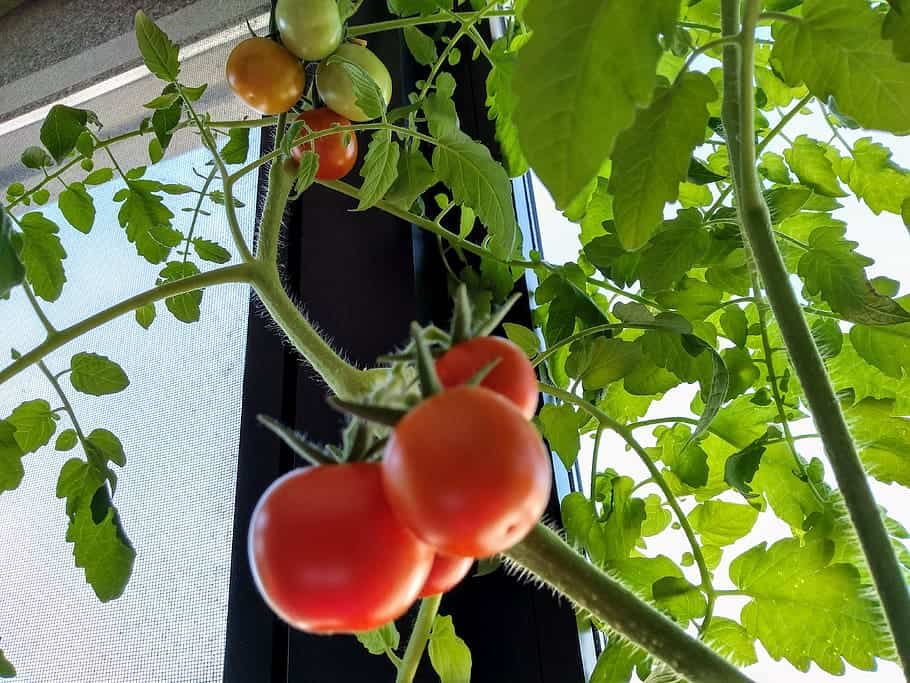
Before you buy tomato cages, it helps to do some research on what you’re buying. You do not want to end up with undersized yet flimsy tomato supports for your plants.
A crucial thing to remember when growing tomatoes is how big they will be by mid-season when buying a cage. It would be best to have a tomato cage of at least six feet tall for your indeterminate tomatoes.
It helps to have a tomato cage of at least four feet tall for your bush tomatoes. Choose tomato cages at least 14 inches wide as your tomato plants grow in a sprawling form. Furthermore, you want a durable and sturdy tomato cage that can handle the plant’s own weight.
If you find the tomato cages at the garden centers or online are too expensive, you can make your own cage using concrete reinforcing mesh. Then, once the size of your bush varieties or other plants is decided, you can determine what cage will work best for you.
Here we list different types of tomato cages you can buy at a garden center or online.
Ring-style or Round Tomato Cage

Many gardeners prefer using the circular or ring-style cage as it is wide and will allow your tomato vines to spread out more.
As a result, your plant grows with good air circulation and helps reduce diseases. The con is it might not provide the support your huge plants need.
Furthermore, this tomato cage can take up a lot of space unless you buy a collapsible one.
Square or Rectangular-style Cages
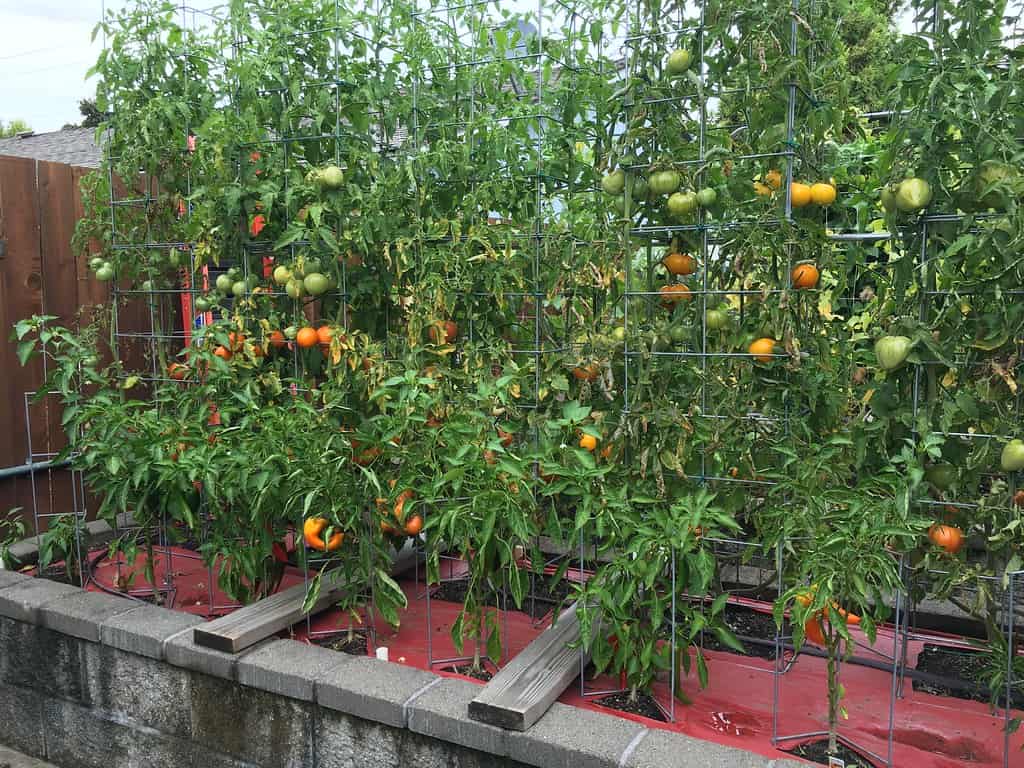 tomatoes in caged trellis @gaillangelloto
tomatoes in caged trellis @gaillangelloto
These store-bought tomato cages often fold up for easy storage, which takes up less space for overwintering.
Nonetheless, it works best for compact plants and might not work well in a small garden. Most are only 53 inches installed, but the panels can come apart to lay flat for storage.
Triangular Cages
These tomato cages are our favorites with a small assortment of your tomatoes. The rectangular wire shape provides enough room for your plant to spread and provides stability.
You can quickly secure them over the center of seedlings, and they are not cumbersome to use.
Yet, it all depends on the kind of tomato cage you buy, as some are not equally made to be sturdy for your larger tomatoes.
Cattle Panel Trellis
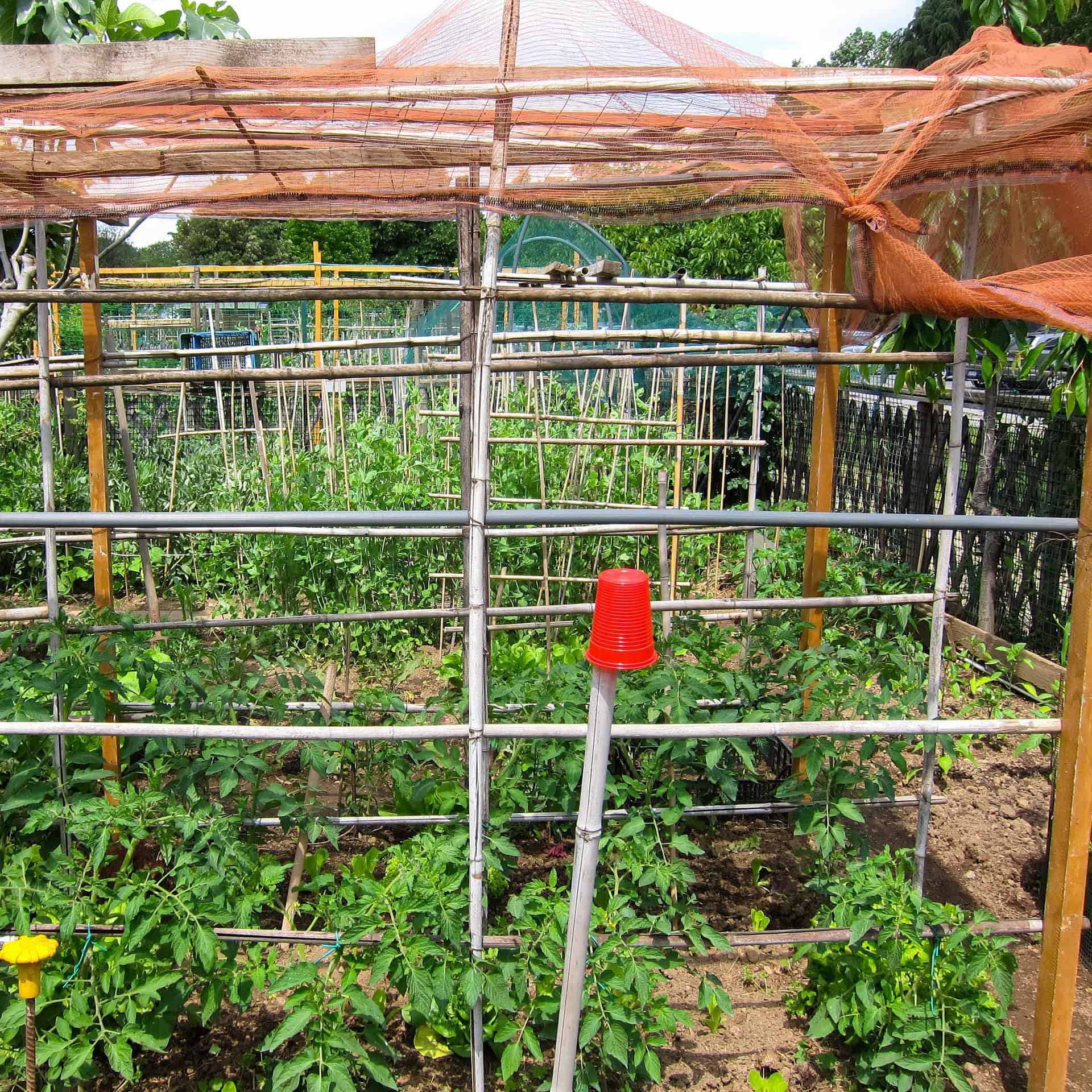
Technically this is not a tomato cage but has more of a trellis shape. But it still works well in the garden.
It works well with indeterminate tomatoes that grow tall, like cherry tomatoes. You can then easily pick your fruit when standing under the trellis. In addition, it is not expensive to build.
Still, if your tomato plants grow in a bush form, it will not be practical.
You can also grow other vegetables in caged trellis such as cucumber, melons, and squash. Check our other blog How to Grow Cucumbers on Trellis for more tips.
-
$39.99Sold By: BubbleBlooms
In stock
Curly Sue big in 4 inch pot, Epiphyllium guatemalensis mostrouse, Curly locks orchid cactus, pink flower cactus, grows large
Only 96 available and it’s in 1 people’s basketRated 4.81 out of 5 based on 279 customer ratings00Sold By: BubbleBlooms -
$26.99Sold By: Cacti and Exotica
In stock
Aloe ramosissima — Quiver tree
Rated 4.98 out of 5 based on 59 customer ratings00Sold By: Cacti and Exotica -
$15.00Sold By: PotHedz Plants
In stock
Philodendron Moonlight
Rated 4.96 out of 5 based on 106 customer ratings00Sold By: PotHedz Plants -
$15.00Sold By: Gardengineering
$20.00In stock
Cebu Blue Pothos
Rated 4.96 out of 5 based on 25 customer ratings00Sold By: Gardengineering
Other Methods of Caging Tomatoes
The above are some tomato cages you can buy from local garden centers. But you can also make your own cages using wooden stakes with wire fencing for your vining plants.
Stakes with wire work well for your indeterminate variety as they can vine along the wire fence. Hence, it provides support for the weight of the branches while growing.
Even using a t-post with wire is a great option, as you can tie the vines to the wire to sprawl.
How To Use Tomato Cages Correctly and Care for the Plants
When you do not install your tomato cages correctly, they will collapse to the ground in a heavy rainstorm. Here are some helpful tips for installing your tomato cages:
Center the cage directly over your seedlings and firmly press it down until it stands straight. It is a crucial step when you live in wet climates as the soil softens with the rain destabilizing the cage.
It helps place t-posts in between two cages for high-wind areas as they provide extra support for your cages.
As your tomato plant grows, you can pull the leaves through the cage to leave them resting on the wires. Or you can tie the stems training them to vine and climb.
Next, add a thick layer of mulch around the plants as it helps to keep the soil moist and prevents diseases.
Now, you can prune off the dead leaves and pick up any fruit falling on the ground to prevent the spreading of diseases.
The Pros and Cons of Stakes and Cages
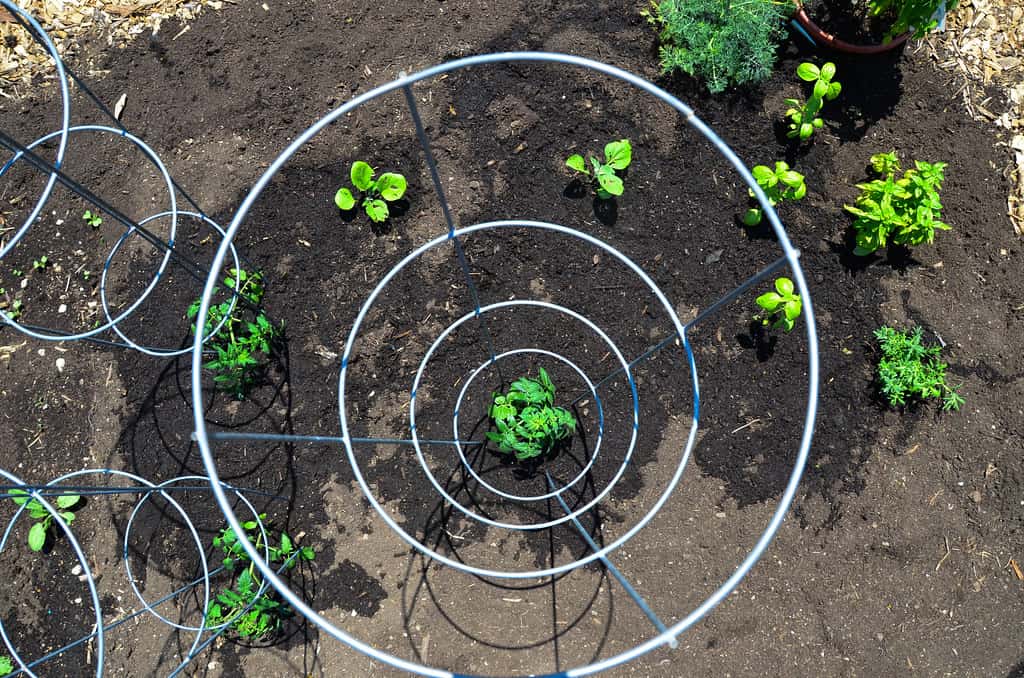 tomato cage @ericallixrogers
tomato cage @ericallixrogers
When you complete the planting of tomatoes, you can use tomato cages or stakes for your determinate and indeterminate tomatoes. So, we have made a comparison for you to decide what will work best for you.
Pros and Cons of Using The Tomato Cage Compared to Stakes
When you use tomato cages, they can take up more space than using stakes, which are easy to set up.
Still, with both supports, the vines are off from the ground resulting in fewer tomatoes rotting.
You will not need to do much pruning or pinching using a cage or even need to do training compared to staking. Still, with the pruning effect of using stakes, you get larger tomatoes.
Furthermore, a tomato cage provides shade protection in the hot sun, preventing sunscald compared to staking.
Another benefit of a cage is more shade to retain soil moisture. Also, you can wrap the cage at the bottom when starting seedlings to protect them from heat and winds.
Another added benefit of using stakes is that you can harvest your tomato plant more easily. Neither will the stakes fall over with added weight compared to a tomato cage.
Enjoy Your Harvesting!
With the tips provided, your indoor plants should produce abundant fruit all season long. You can add your homegrown produce to salads, pick them and eat them or add it to sandwiches. Or use them for a delicious pasta sauce.
Whether you use tomato cages or stakes to stabilize your plants, they will grow successfully. The added benefit of getting a colossal yield is that you could can your tomatoes. Happy harvesting!
Whether you want to buy, sell, or simply reach out to other plant enthusiasts, Plantly is the right place to be!
-
$11.99Sold By: Succulent Oasis
In stock
Cactus Plant Medium Mammillaria Eleganz. A beautiful, geometric design of spines is very unique.
Rated 4.84 out of 5 based on 352 customer ratings02Sold By: Succulent Oasis -
$9.00Sold By: Stripes and Variegations
Only 1 left in stock
Old Lady Cactus – mammillaria hahniana
Sold By: Stripes and Variegations -
Free Shipping$34.99Sold By: Aloha Hawaii Orchids
$39.99In stock
Dendrobium Ladda Red Flower 2″ Pot
Rated 4.65 out of 5 based on 268 customer ratings00Sold By: Aloha Hawaii Orchids -
Free Shipping$370.59Sold By: BONSAI WORLD LLC
Only 1 left in stock
Juniper Bonsai Tree – Trained (juniper procumbens nana)
Sold By: BONSAI WORLD LLC
